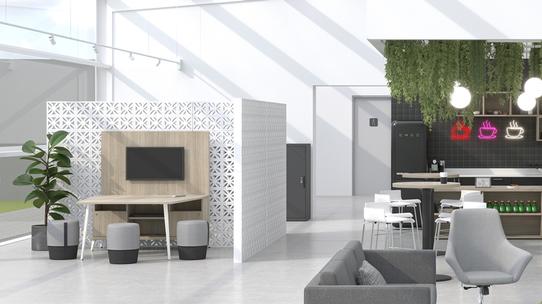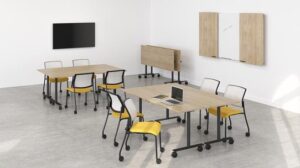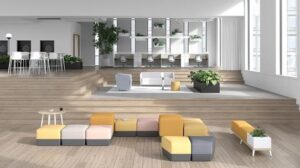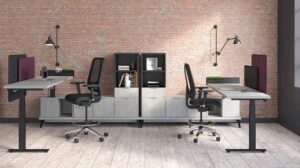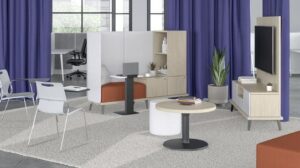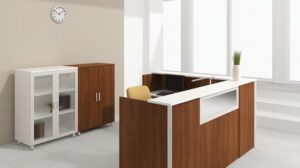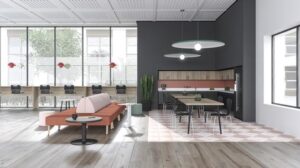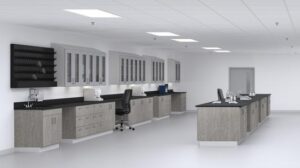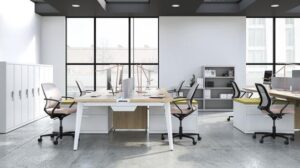We can see in every office that traditionalists and Gen Zs, two generations with vastly different upbringings and work philosophies, now share the same workspace. The question facing every business leader and designer is this: How can office interior design and modular furniture bring these demographics together, fostering not just coexistence but genuine collaboration and mutual understanding?
The answer lies in creating environments that honor the values, preferences, and work styles of every generation. Through intentional design, ergonomic furniture, and flexible layouts, the office can become a vibrant hub where mentorship, innovation, and community flourish.
Understanding Generational Needs in Office Interior Design
To merge Traditionalists and Gen Zs, start by recognizing their unique perspectives. Traditionalists often value privacy, routine, and dedicated workspaces, while Gen Zs crave flexibility, digital connectivity, and opportunities for creativity and collaboration. Yet, both generations share a desire for meaningful work, belonging, and spaces that support their well-being.
Office interior design that bridges these differences must provide variety and choice. Dedicated zones for focused work offer Traditionalists the stability they appreciate, while open-plan areas, breakout spaces, and communal lounges give Gen Zs the dynamic, social environments they seek. Corporate interior design should allow for seamless transitions between solo work and group activities, making every employee feel seen and supported.
The Power of Modular Furniture in Bridging Generations
Modular furniture is the unsung hero of age-inclusive office interior design. Unlike static, one-size-fits-all setups, modular furniture offers adaptability, empowering teams to rearrange their environment as needs evolve. For Traditionalists, modular furniture can create familiar, private nooks with ergonomic chairs and adjustable desks. For Gen Zs, it can be transformed into collaborative clusters for brainstorming, project work, or impromptu meetings.
Corporate interior design that leverages modular furniture ensures that the workspace remains relevant and comfortable for everyone. Imagine a meeting area with movable tables and stacking chairs that quickly morphs from a quiet zone to a buzzing hub of activity. This flexibility not only accommodates different work styles but also encourages cross-generational interaction and knowledge sharing.
Ergonomic Furniture: The Equalizer Across Generations
The most powerful tool for merging generations is ergonomic furniture. Adjustable table desks allow both Traditionalists and Gen Zs to personalize their setup, promoting comfort and productivity. For Traditionalists, who may spend long hours at their desks, ergonomic chairs with lumbar support and intuitive adjustments reduce strain and fatigue. Gen Zs, who often seek movement and variety, benefit from sit-stand desks and soft seating options that let them change posture throughout the day.
Corporate interior design that prioritizes ergonomic solutions signals to every employee that their health and comfort matter. When everyone-from the most experienced to the newest team member-feels physically supported, barriers break down, and collaboration becomes natural.
Communal Spaces: The Heart of Collaboration
No office interior design is complete without communal spaces that invite interaction. Kitchens, lounges, and breakout areas designed with modular furniture become the heart of the workplace, where Traditionalists and Gen Zs can connect informally. Large tables foster group lunches and team meetings, while soft seating and biophilic elements create welcoming environments for casual conversations or mentorship moments.
Corporate interior design that encourages “engineered serendipity”-chance encounters and spontaneous discussions-helps build a culture of respect and curiosity. In these shared spaces, generations learn from each other, exchange ideas, and build the trust that drives organizational success.
Accessibility and Universal Design
A truly inclusive office interior design is accessible to all. Wide walkways, adjustable-height desks, and easy-to-reach storage make the workspace comfortable for employees with varying physical abilities. Modular furniture with intuitive adjustments further enhances accessibility, empowering everyone to work independently and confidently.
Corporate interior design that embraces universal design principles ensures that the office is a place where everyone, regardless of age or ability, feels welcome and valued.
Fostering Mutual Understanding Through Design
When office interior design, corporate interior design, and modular furniture work in harmony, the result is a workplace where Traditionalists and Gen Zs don’t just coexist-they thrive together. Ergonomic furniture fosters comfort and health, communal spaces spark connection, and flexible layouts encourage collaboration and mentorship. In this environment, generations learn from each other, share wisdom, and drive innovation as a united team.
Key Takeaways
- Office interior design that embraces variety and flexibility bridges generational gaps.
- Modular furniture adapts to the needs of both Traditionalists and Gen Zs, supporting privacy, collaboration, and movement.
- Ergonomic furniture, such as adjustable desks and chairs, ensures comfort and productivity for everyone.
- Corporate interior design that prioritizes communal spaces, technology integration, and acoustic comfort fosters mutual respect and teamwork.
- Universal design and accessibility make the workplace inclusive for all ages and abilities.
- When design brings generations together, organizations unlock creativity, resilience, and a culture of belonging.
The Bottomline
The future of work is not about choosing between generations-it’s about designing spaces where all can thrive. When office interior design, corporate interior design, and modular furniture come together with empathy and intention, they create environments where Traditionalists and Gen Zs collaborate, innovate, and grow side by side. In these offices, diversity becomes a strength, and every generation finds its place at the table.
Frequently Asked Questions (FAQ):
How does office interior design help Traditionalists and Gen Zs collaborate?
Office interior design creates a blend of private and communal spaces, allowing Traditionalists to focus and Gen Zs to connect. Modular furniture and ergonomic solutions make it easy to adapt the environment for any task, fostering cross-generational teamwork.
Why is modular furniture important in corporate interior design for multi-generational teams?
Modular furniture offers the flexibility to rearrange workspaces for solo work, group projects, or social interaction. This adaptability ensures that both Traditionalists and Gen Zs feel comfortable and engaged.
What role does ergonomic furniture play in merging generations at work?
Ergonomic furniture supports the health and comfort of every employee, regardless of age. Adjustable desks and chairs allow for personalization, breaking down barriers and promoting a sense of equality and mutual respect.
